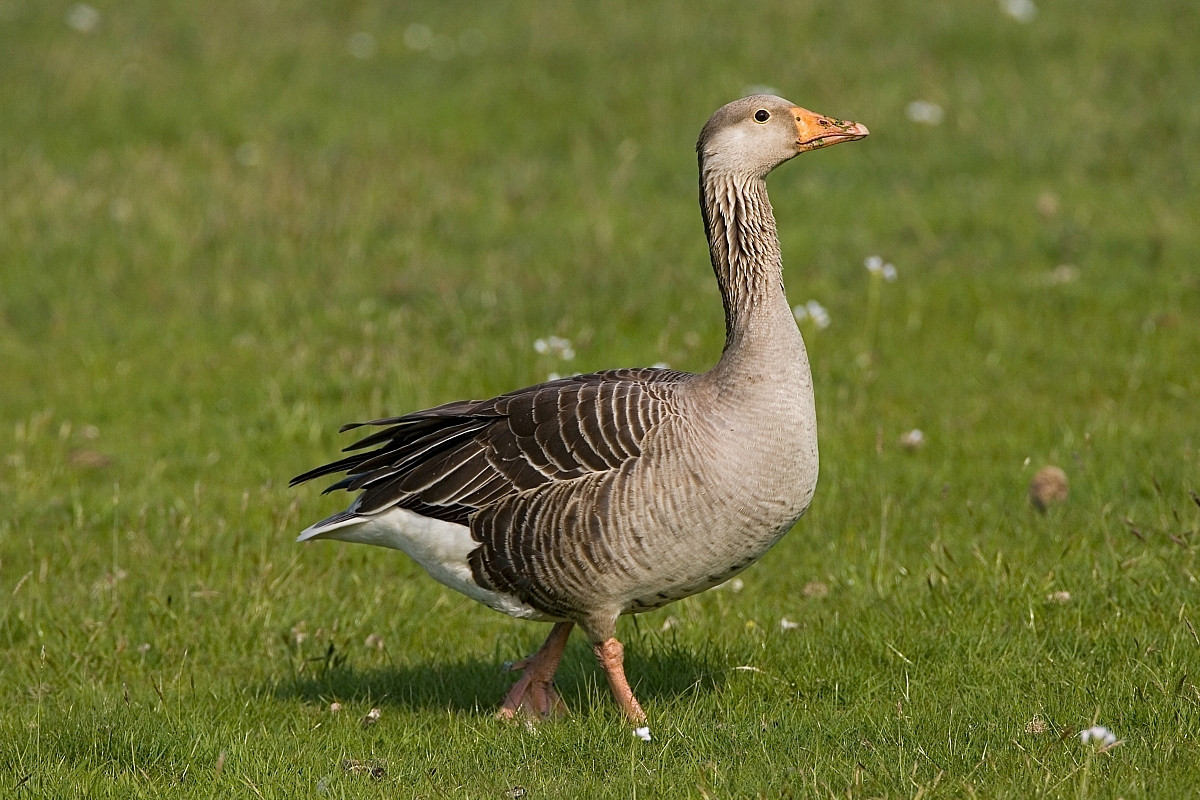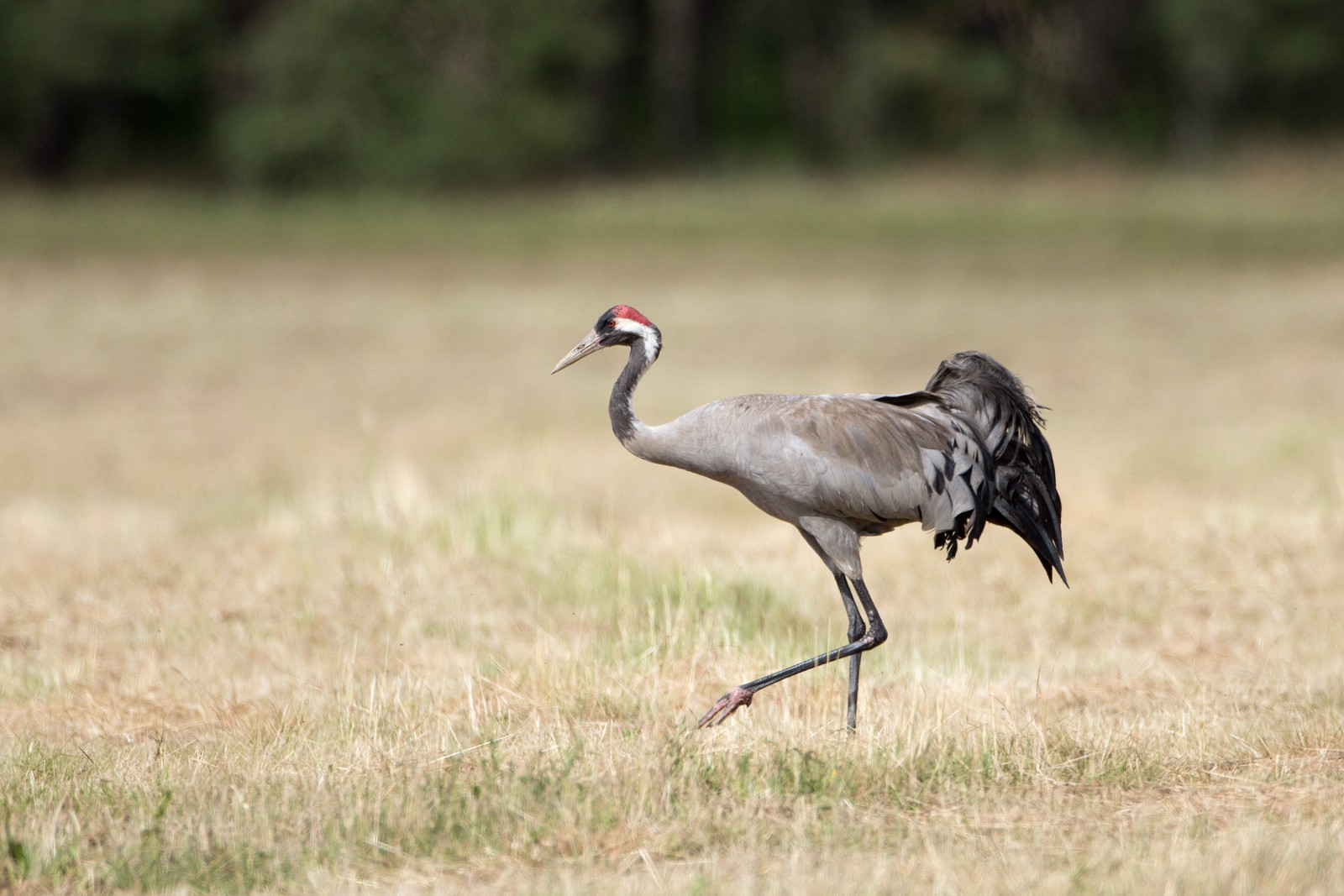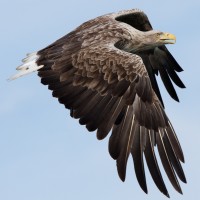Description
The low vegetation now provides meadow-breeding waders and other ground-breeding birds with a good all-round view once again, and these species have responded with rapidly increasing breeding populations. Two observation towers provide a good overview of the grazed lakeshore area. White-tailed Eagle and Peregrine Falcon like to hunt in the dense flocks of waterbirds. In autumn, the “Graurinderkoppel” (the Hungarian Grey cattle paddock) is probably the best place in Austria to see Common Crane. In wet years, the Meierhoflacke to the west of the National Park administration building is a good spot for a wide range of ducks and waders.
Details
Access
Following Wasserzeile in Apetlon, turn right at the signpost to “Steppenrinderherde” (“Hungarian Grey cattle herd”) and follow the long road “Apetlon – Rohrung” that leads straight to the lakeshore zone.
Just outside the town’s limits there are some horse and cattle paddocks to the north of the road, which Greylag Goose, Crested Lark and Red-backed Shrike like to frequent. In wet years, things start to get interesting to the south of the road just past the turnoff to “Feriendorf Vogelparadies”. White Stork and Western Marsh Harrier forage for food here, while Northern Lapwing, Black-tailed Godwit, Common Redshank, Sedge Warbler, European Stonechat, and Reed Bunting vociferously defend their territories. A magnificent concert of frogs can also be heard here on nightly excursions. The moment one reaches the Graurinderkoppel after about 2 km, the dimensions of this vast pastureland quickly become clear. A very spacious observation tower offering good protection against the elements can be reached (only on foot or by bicycle) a little to the north. This is a great vantage point from which to scan the majority of the water surfaces for waterbirds. Even when the water retreats back towards the lake in summer, one still has a perfect view of the remaining damp patches from here. The distances are considerable, so using a spotting scope is recommended in the first morning light to avoid heat shimmer.
The inundation zones at the edge of the reeds are important foraging areas for Eurasian Spoonbill and Whiskered Tern. Broad-billed Sandpiper is just one of the highlights that occurs here regularly on migration. In summer, Black-crowned Night Heron is sometimes seen flying overhead in the evenings. In winter, the Graurinderkoppel is foraging ground for nordic geese and hunting ground for a variety of raptors. It is worth making regular observation stops on the way to the Grey cattle stable, be it to look out for Red-throated Pipit taking flight (which like to rest here), or to take in the magnificent evening arrival of the Common Crane after late October. Probably the best view of the Crane spectacle can be had from the old border watchtower next to the Grey cattle stable, which also offers an open vista towards the Hungarian border to the south. In wet years, it pays to stop off at the Meierhoflacke next to the Apetloner Hof, the administration building of the Neusiedler See - Seewinkel National Park. Aside from Common Teal, Northern Shoveler, and Garganey, this lake can also be bustling with Common Snipe, Little Ringed Plover, Spotted Redshank, Wood Sandpiper, and Ruff. Following the road to the north, one returns to Apetlon town at its southern edge.
Terrain and Habitat
Steppe , Wetland , Scattered trees and bushes , GrasslandConditions
Flat , Open landscapeCircular trail
YesIs a telescope useful?
Can be usefulGood birding season
All year roundBest time to visit
Spring , Autumn , SummerRoute
Wide path , Unpaved road , Paved roadDifficulty walking trail
EasyAccessible by
Foot , Bicycle , CarBirdwatching hide / platform
YesExtra info
From the extinction of the Hanság breeding population in the 19th century until around the turn of the millennium, observing Common Crane in Austria was a matter of chance. Since then, observations have become more and more frequent, especially south-east of Lake Neusiedl (on the Hungarian and Austrian sides). Thanks to positive population development and to shifts in migration routes, quite large flocks can now be expected here, especially between mid-October and mid-November. The best observation points are the Graurinderkoppel in Austria and the Borsodi-dűlő in Hungary, where Common Crane are best observed at dusk when they land to roost.




